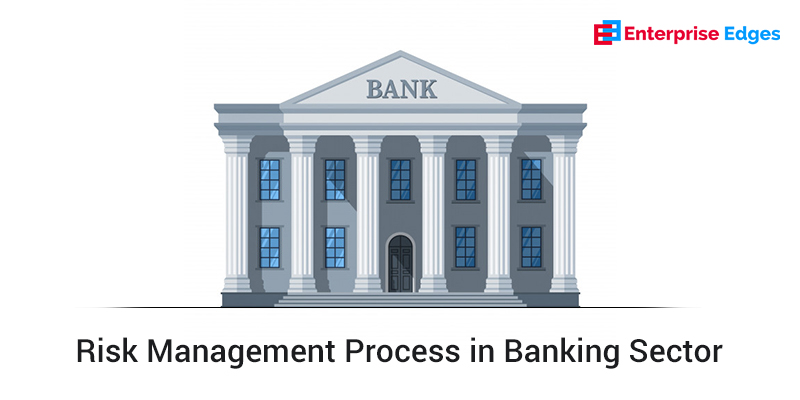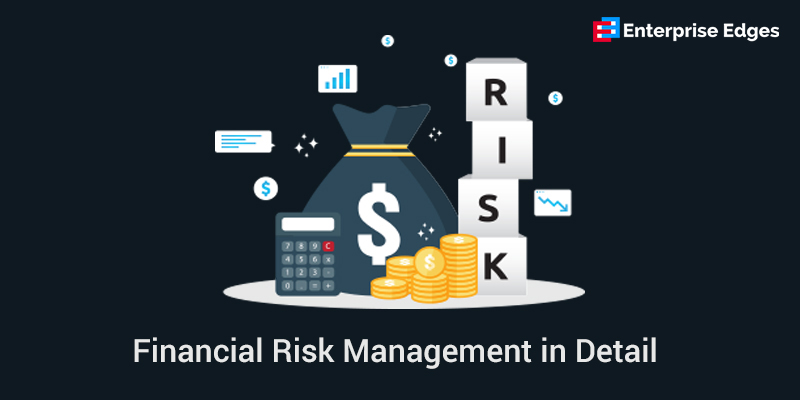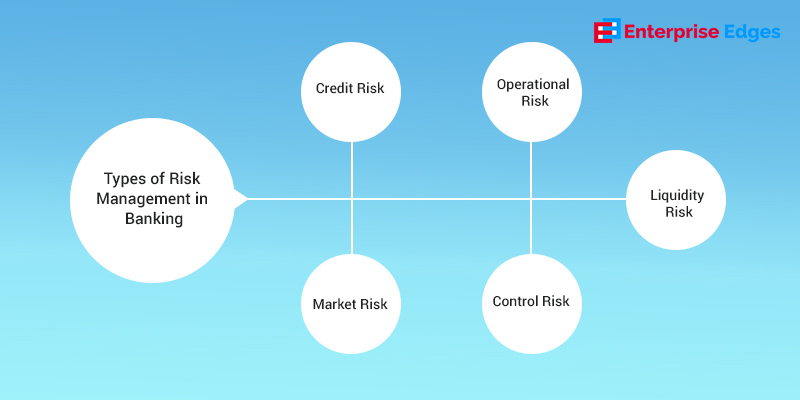The banking industry is facing enormous challenges due to the continuous regulatory change implementations in their process. Due to the reduced risk management process in banking, the world has already faced several scenarios of the economic crisis. The effect of economic loss has an impact on the local lives in forms of unemployment, reduction in service demands, company downtime, and lot more. Therefore the banking industries are now planning on taking better measures on overall risk management in investment banking. There are strict policies lined up for processing the risk management process in Banking effectively to control the risk factors and progress on regulations. The job of the banks is to follow the latest risk management process in banking and provide good returns to shareholders.

Know about Financial Risk Management in Detail
What is risk management? According to the world of finance, risk management solutions become crucially essential to identify the risks and take critical steps to suppress the contingencies. Once an entity invests, they are exposed to numerous financial risks such as volatility of markets, recession, bankruptcy, high inflation, and others. The role of the investors and the fund managers is to control the risk exposure of the financial investment and minimize the risk count by incorporating the financial risk management process.

Neglecting the need for risk management in Banking can lead to financial turmoil in the long term. Different financial assets welcome different risk levels. Eliminating the risks is never the perspective of the financial risk management process. Instead, one must know the ideology to accept or avoid different types of hazards. It means that you need to judge according to your needs to take some of the risks for the fruitfulness of your investment and also neglect some of the risks to avoid downfall.
Know the Different Types of Risk Management in Banking
The market risks can come up at any point in time while your business operation is on track. The offline business models are at a high risk of incorporating more risks than the online business. Despite the business sector, you are most likely to face market risks due to the business overrun by competitors or many other reasons. Here are the different types of Risk management in the Banking industry that will give you better information on how to avoid risks and take better management steps for different kinds of risks.

1. Credit Risk
Due to the fluctuation in the credit quality of the borrower, the credit risk takes place in one of the two components of it. The two components of Credit Risk are Credit Spread Risk and Default Risk. The default risk arises at the point when the borrower fails to pay the principal or the interest amount as per the bank norms. It will reduce the credit quality of the borrower. For even the worst scenarios, the borrower may not fall into the default component and still hamper the credit quality. Lower the credit quality, lower is the credit rating. The continuous downgrade of the credit rating of the borrower gives rise to credit-spread risk.
The measuring criteria for the Credit Risk are loan losses estimation and credit rating. For efficient risk management in the banking sector, the banks need to keep track of the behavior of the borrower after the period is over. There is a high chance that the borrower with a high credit rating might fall under default risk after the period ends, whereas the borrower with low credit rating may be on time for repayment after the period. Keeping this track will help the bank keep count on the cost of default that will help in determining the loan pricing for recovering the cost of default.
In other ways, the banks can be safe from credit risk by following the credit policy strictly. The banks must follow pre-sanctioned inspections and go for an assessment of the borrowers concerning tax returns.
2. Operational Risk
The loss that the bank incurs due to any internal failure of the process is termed as operational risk. The operational risks incorporate several attributes of the bank functions, and it has an impact on almost every organization. It is so because the contingencies and deviations disrupt the standard functioning plans of the systems. Therefore operational risk management process becomes essential as these risks give rise to inherent system faults and also technological faults that will suppress the organizational earnings.
Some of the external reasons, such as forgery and frauds, also lead to substantial operational risk in banks. These external reasons put the functional areas of the bank in a vulnerable state where they are at a high chance of experiencing operational risk in Banks. The Basel Committee states that there are several tools and techniques ready to allocate the capital amount for the functional loss. Under the operational risk management efforts, the banks need to put more stress on improving the existing norms to identify the operational risks more efficiently. The Basel Committee also suggests that the banks keep the regulatory capital at minimum to up to 8% for encountering a few of the banking risks, including operational risks.
3. Market Risk
There are many activities that the banks are involved in that are associated with market fluctuations. Some of the products of the bank are at high market risks, such as equity, debt securities, derivatives, and foreign exchange. The risk of deviations in the market gives rise to various market risks as a result of market movements during the liquidation period of the transactions.
The latest market risk management process in banking includes several measures. The steps by which the banks can identify and take preventive measures for market risk are:
- Risk Identification is the most crucial part of the management of the risk. Timely identification can help prevent major risk factors.
- The next step is the measurement of the risk. In this step, the intensity of the risk is measured on a large scale to know the ability of the risk factor for causing asset damage.
- After the measurement, the main work lies in monitoring the market risk factor to predict the right steps when the risk goes out of bound to affect the banking functions adversely.
- When you have known the potential of the market risk in causing the downfall of the bank’s trading assets, then you must take measures to control the risk factor by all means possible.
4. Control risk
The control risk management process in banking is categorized in different attributes which include internal control risk, organization risk, management risk, and compliance risk. The risk that arises due to the failure of the control system essential for the internal process gives rise to control risk. For managing the internal control risk, there are different remedies taken, such as an audit system for internal banking functions, laundering controls, and others. Internal controls need substantial care to prevent higher forms of risk.
The organization’s risk arises due to the inappropriate structure of functions in the bank related to the business. The internal and external relationship is also equally responsible for the organizational risks. To overcome it, the organizational structure requires modification and tuning with the legal bank requirements. Organizations need to be stable enough to withstand frequent banking changes. Other organizational risks may come up due to the strained relationship amongst the regulatory authorities, customers, companies, and others.
The management risk comes up due to low-standard integrity management. One must have perfect management personnel to deal with quality, integrity, and competence management to give effective results in eradicating the management risk of the bank. The compliance risk arises when the compliance norms are violated according to the higher authorities. The material compliance failures in terms of law and regulations can also give rise to other bank risks.
5. Liquidity Risk

Liquidity risk is also known as funding risk, which arises when one tries to buy or sell funds. If you are finding some obstacles while raising funds, then that is the liquidity risk. The banks need to be ready with extra cash to deal with liquidity risks to avoid loss of credit. For the liquidity risk management process in banking, the banks need to keep a regular monitor on bulk deposit percentage along with its composition. The banks must also look after the liquid assets for short terms and long terms along with the total deposits.
Conclusion
The risk management process in banking is one of the most effective ways of dealing with the vulnerability of the banking industry. These are a few of the different types of risks and their management strategies to deal with the adverse situations of banking functionality. With the proper risk management in banking, the economy of the world will remain stable without the scenarios of unemployment or recession.